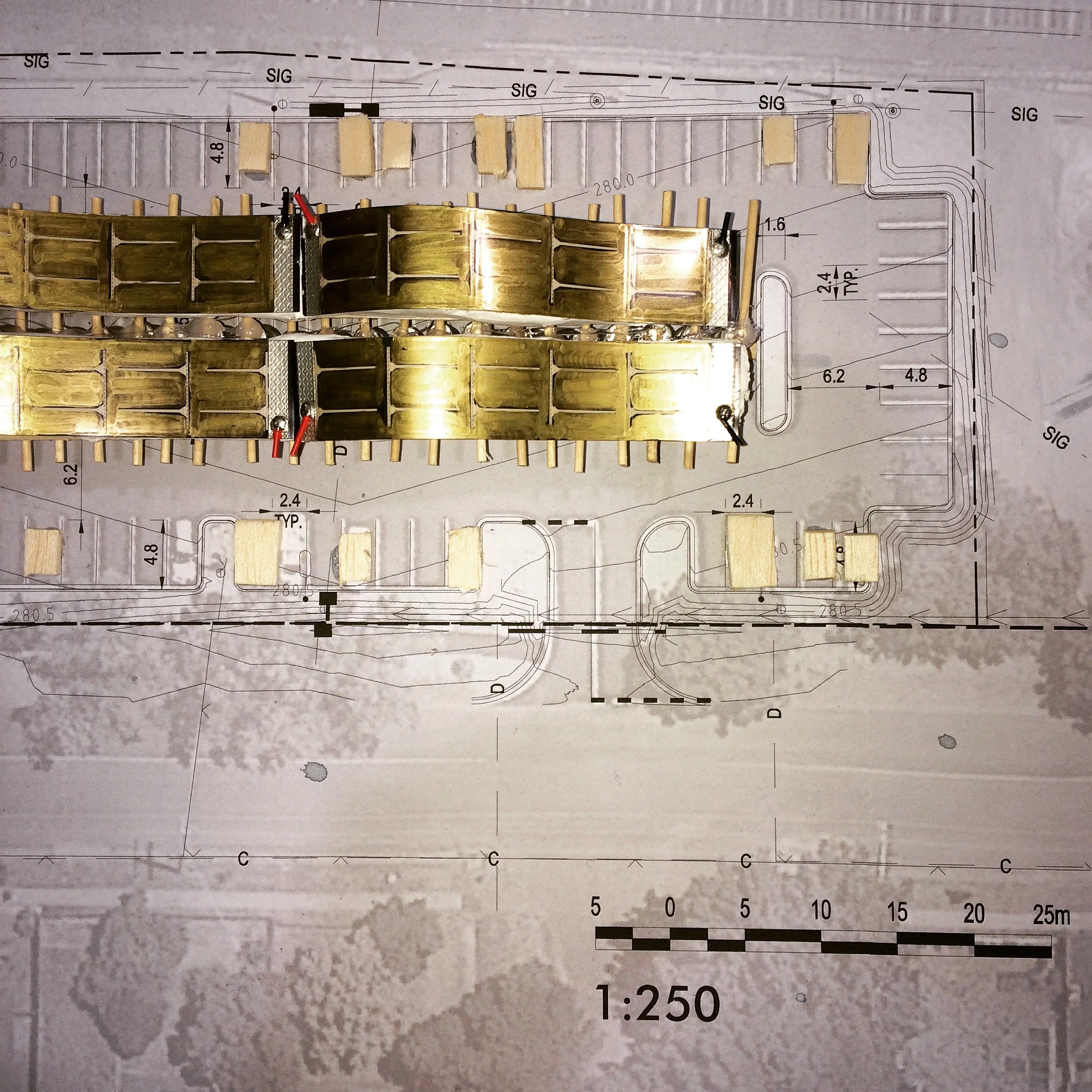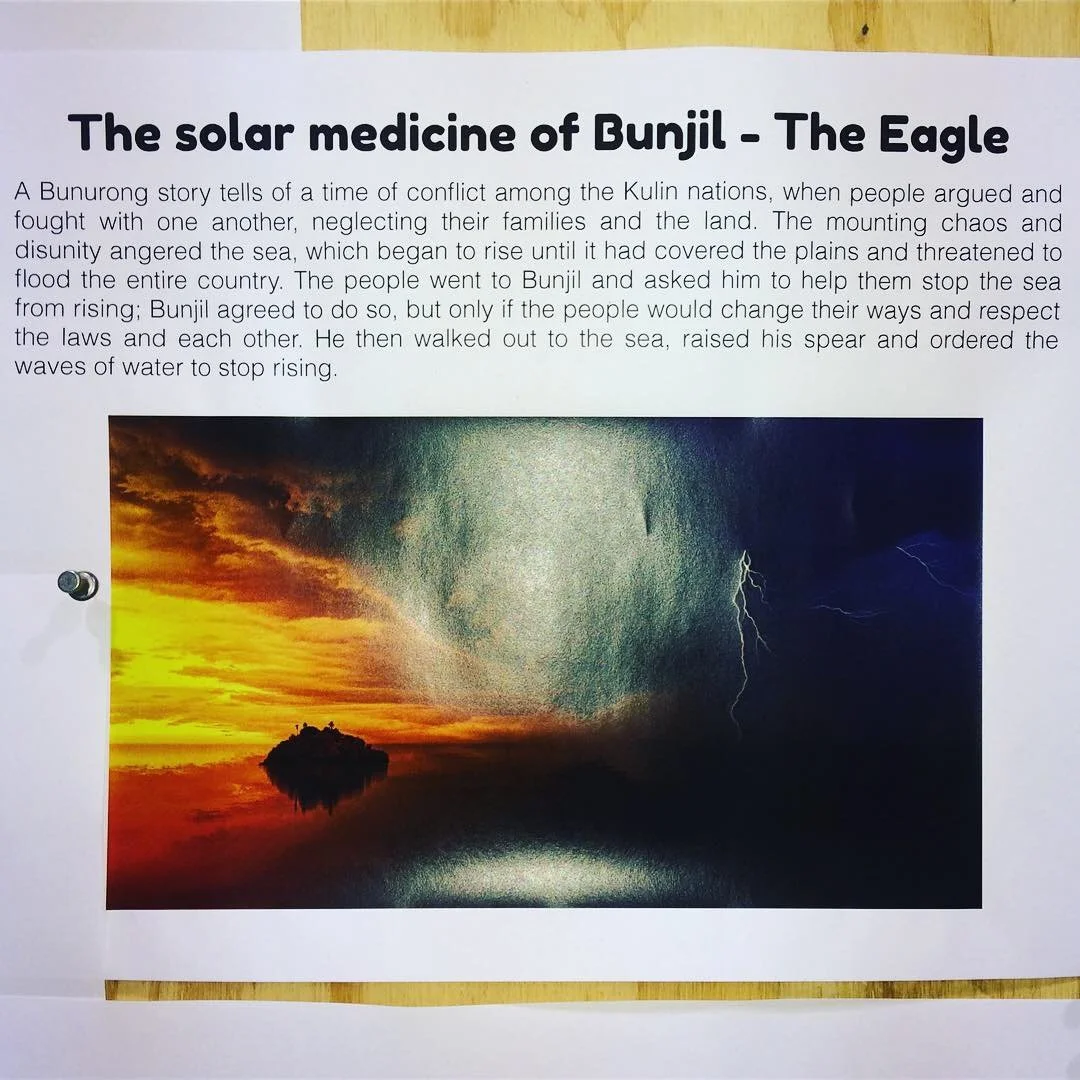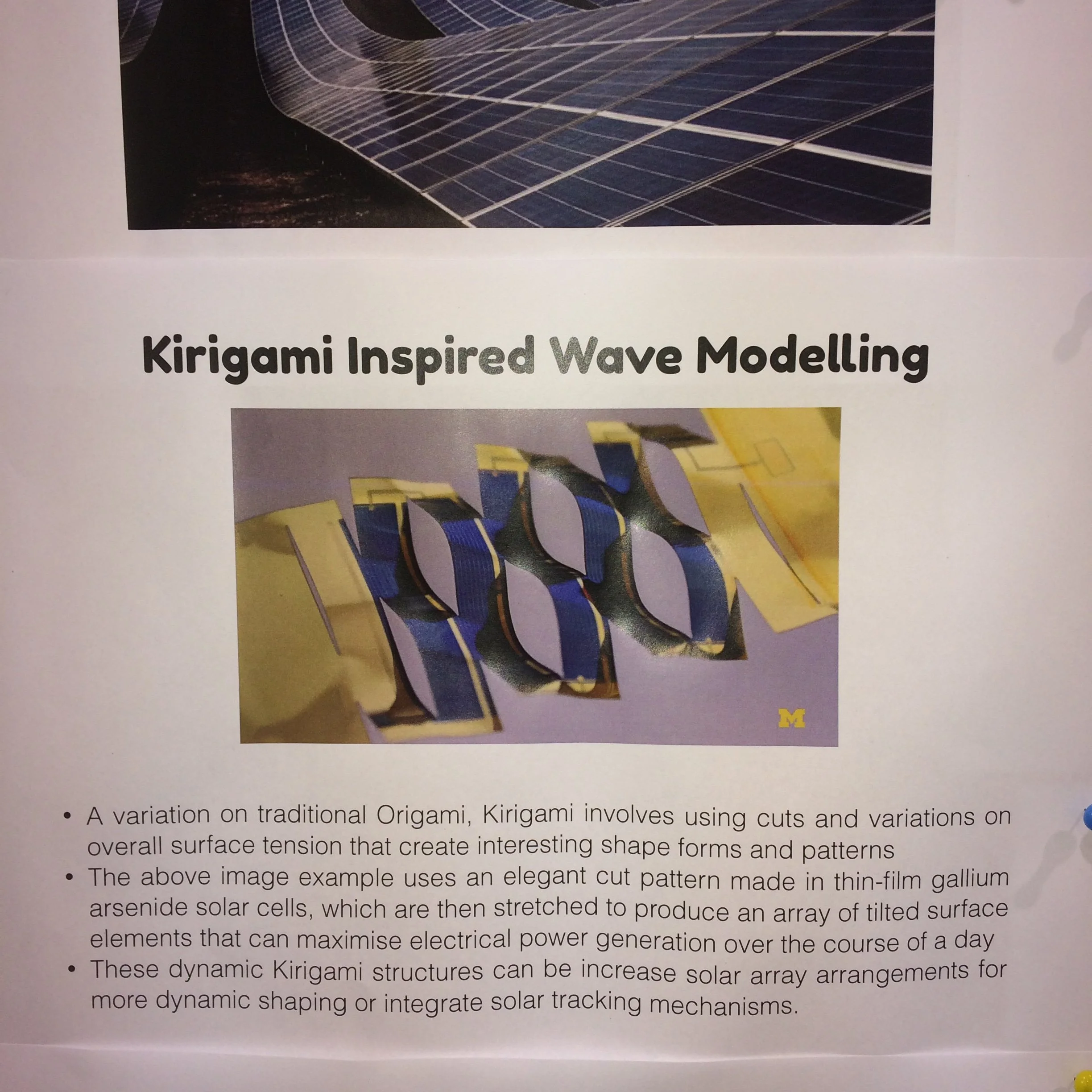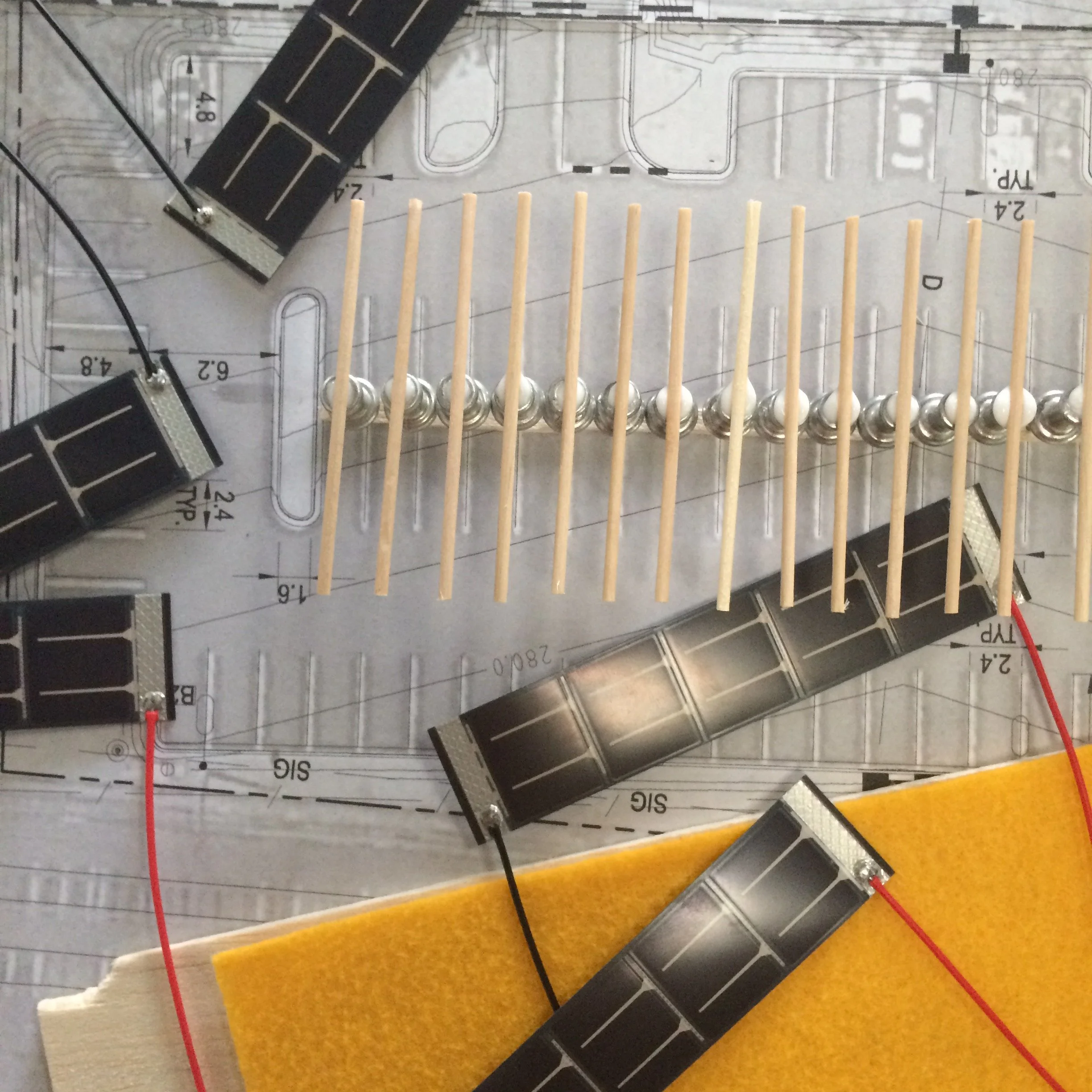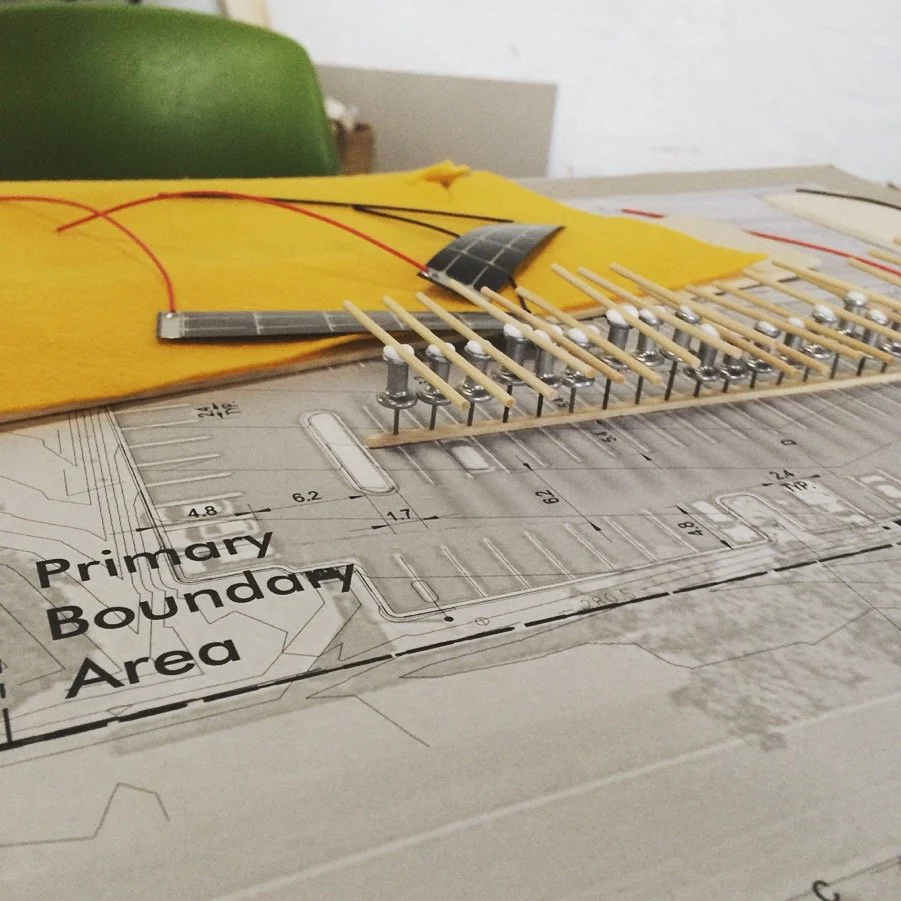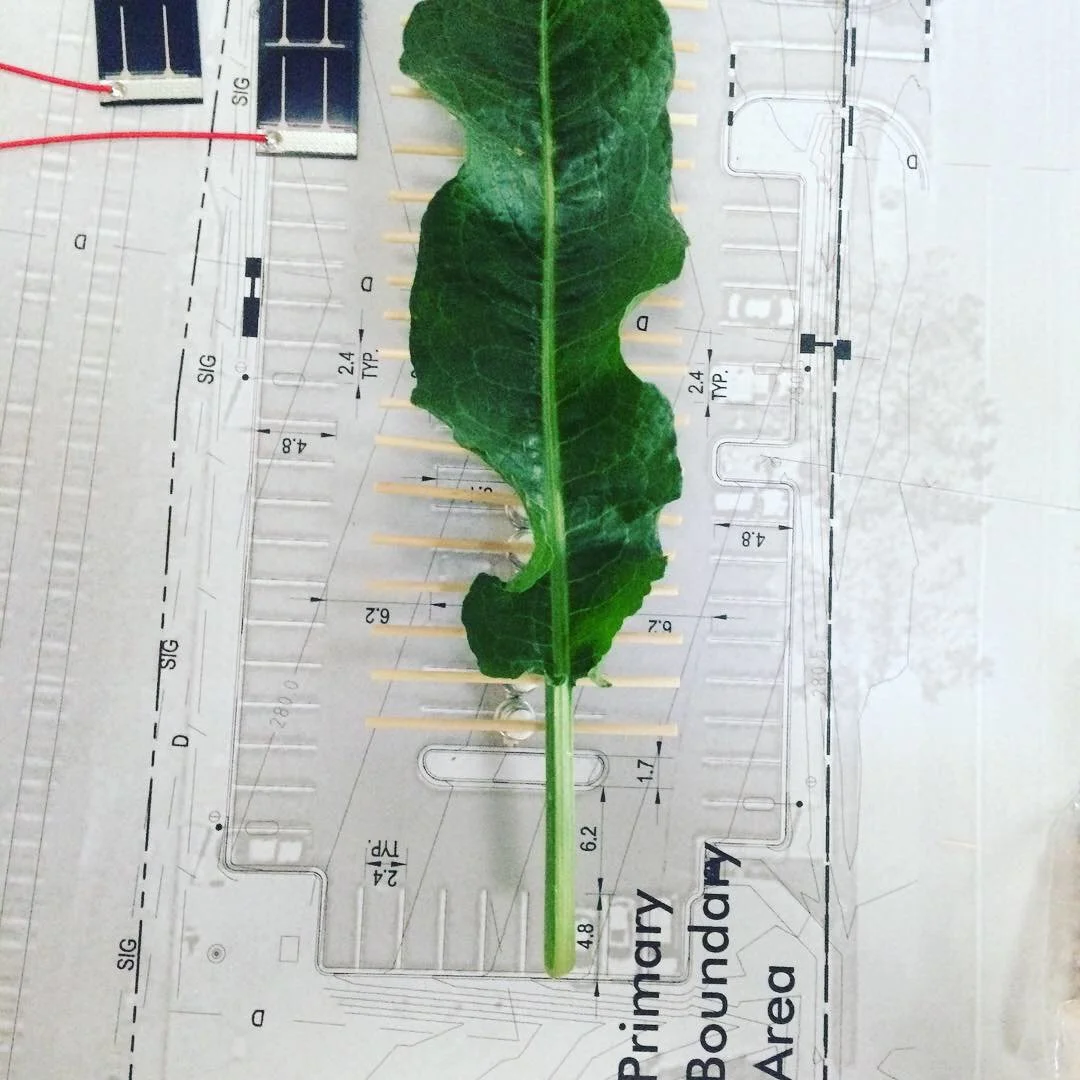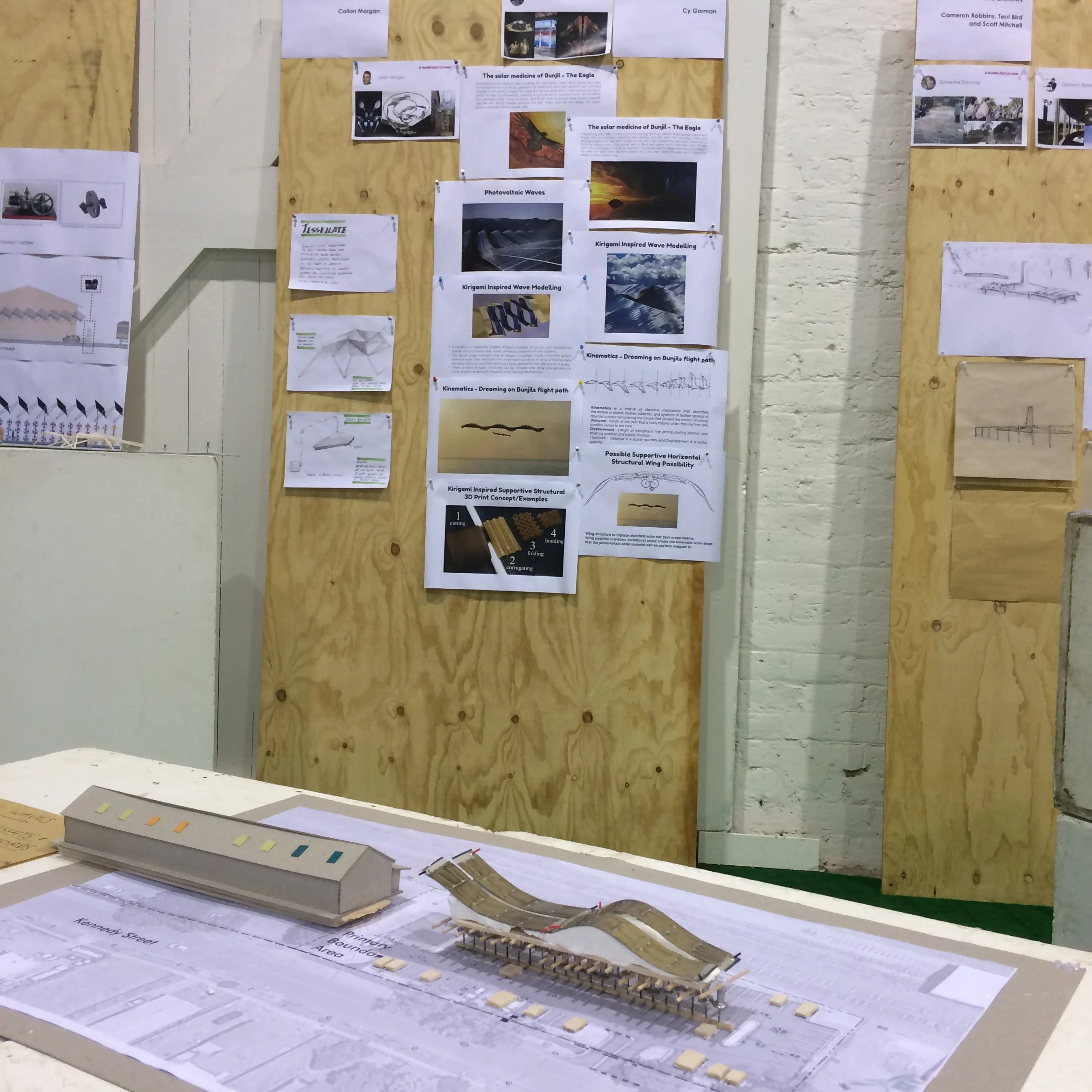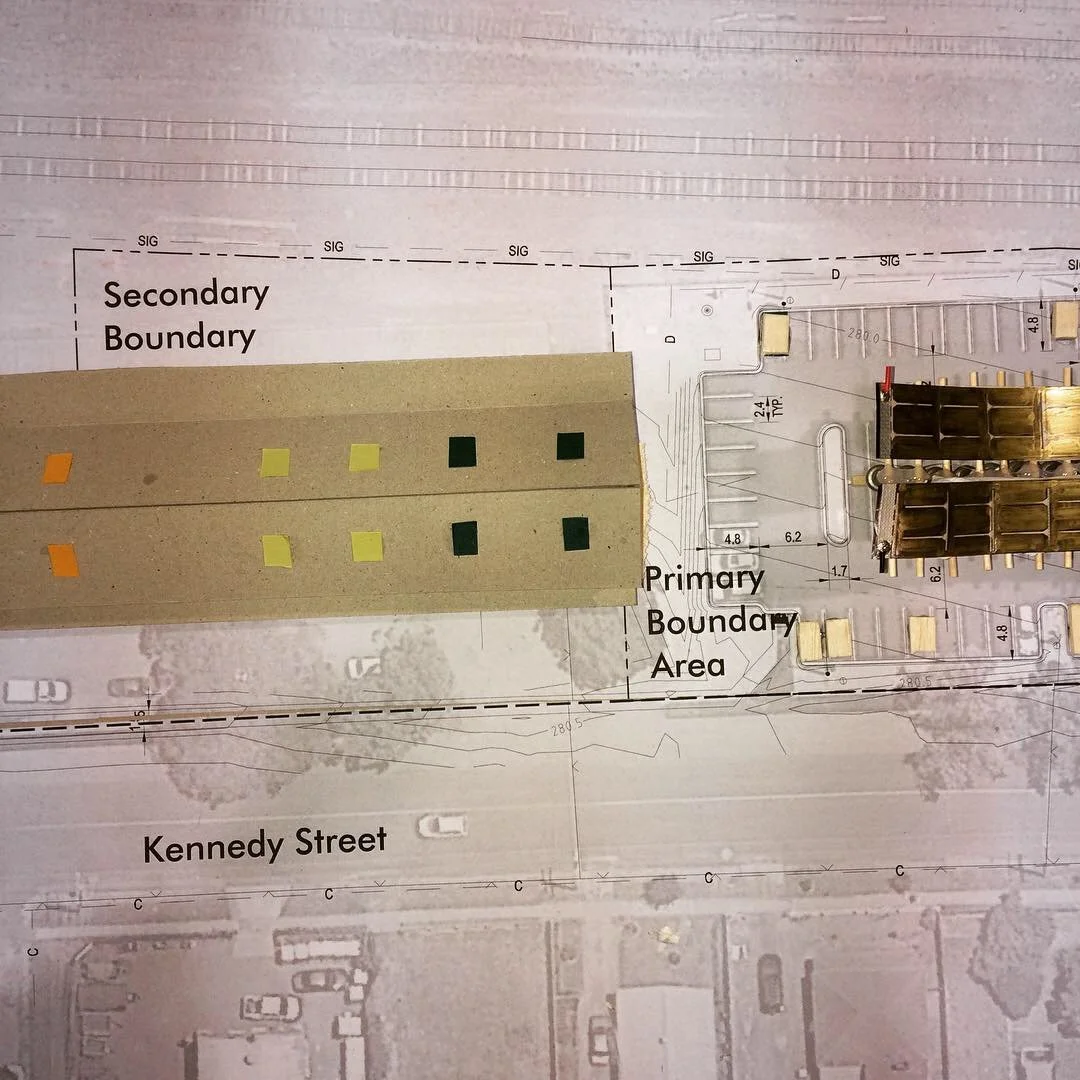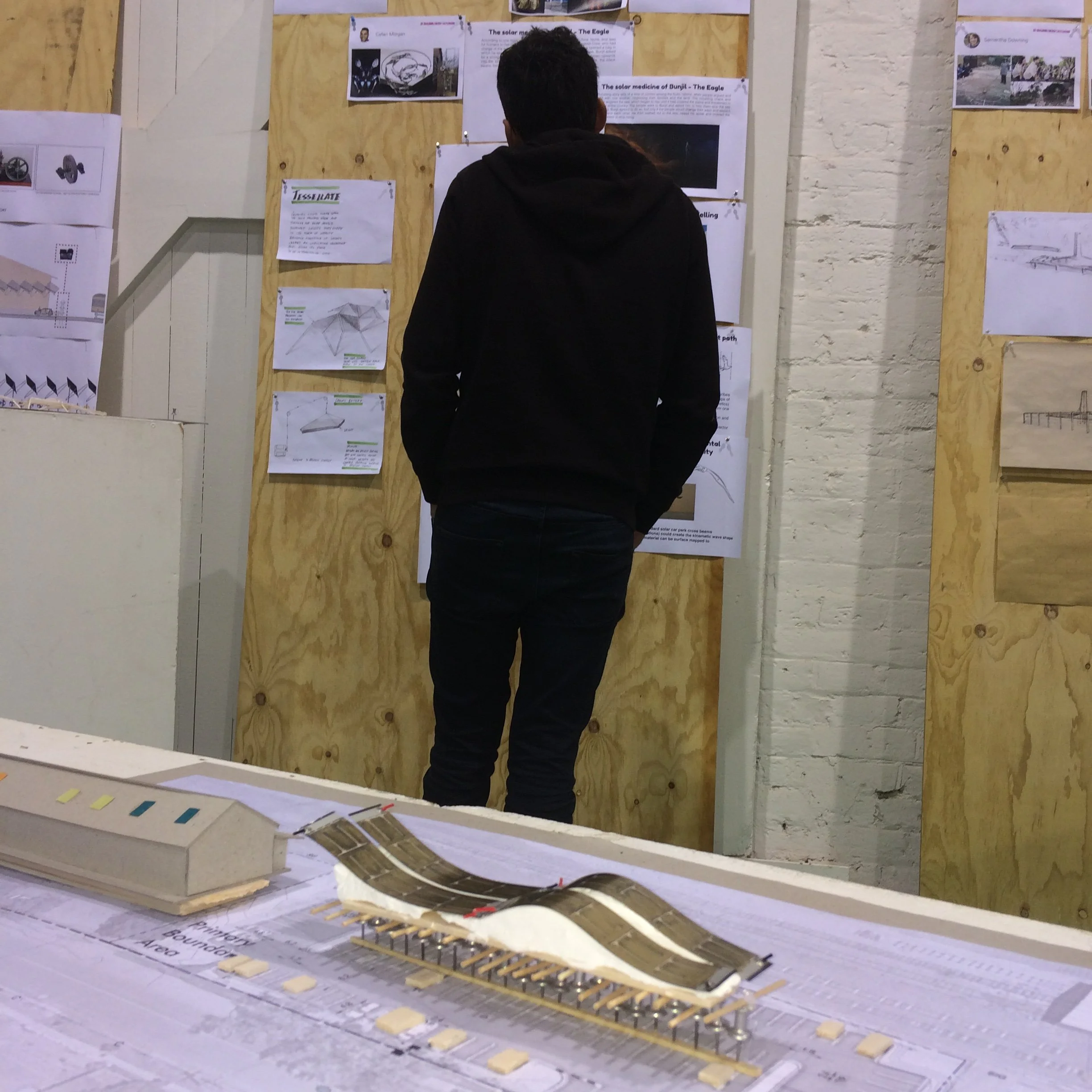Re-Imagining Castlemaine
#EnvironmentalDesign #SustainableDesign #CommunityEngagement #InclusiveDesign #CollaborativeDesign #DesignForPlace #DesignLeadership #StakeholderEngagement
Introduction
The Land Art Generator Initiative (LAGI) Re-imagining Energy Castlemaine workshop — was an intensive, three-day charrette that invited local designers, architects and engineers to envision renewable-energy public design-art for Castlemaine’s historic Goods Shed Car Park. This project emerged as part of a larger collaborative design sprint, bringing together local artists, designers, engineers, and community members to reimagine energy futures for Castlemaine. Acting in an advisory capacity, the outcomes of this public exhibition were developed to inform council, stakeholders, and the broader community—offering speculative yet grounded proposals that align sustainable energy generation with cultural, ecological, and place-based values.
Indigenous Wisdom: The undulating form is inspired by the Bunurong story of Bunjil the Eagle—a creator figure associated with wind, flight and the calming of rising seas. The wave geometry tracks Bunjil’s flight path, suggesting motion, guardianship and the cyclical flow of energy.
Design Concept: Replace existing skylights with translucent dye-sensitised photovoltaic (DSC) “wave” panels. By day the kirigami-patterned panels harvest ~5 MWh of solar energy annually; by night they become a programmable canvas for colour-washed LED uplighting and ambient soundscapes synchronized to passing trains and local environmental data.
Technology:
Thin-film DSC or GaAs cells cut into expandable kirigami lattices for passive solar tracking.
Warm-white linear uplights mounted on truss chords for heritage roof wash.
Motion sensors + micro-server to modulate light/sound according to train speed, ambient brightness and community events.
Deliverables
• Concept Deck (A1 boards): Vision, site analysis, kirigami prototypes, Indigenous narrative references, kinematic studies of avian flight Complete & exhibited
• Physical Model (1:200): Cardboard massing with POC interchangeable PV wave modules
• Energy Yield Study: Preliminary DSM sun-path + annual generation estimate (~5 MWh)
• Interactive Light/Sound POC Script: Server-side template for ocean-wave sonification tied to LED fixtures Prototype
• Community Presentation: Public pin-up + Q&A with Castlemaine residents, MASG, VicTrack & LAGI team
Key Insights
• Kirigami ≠ flat panel: Stretch-cut lattices allow PV surfaces to passively tilt toward optimal solar angles without motors—reducing weight and respecting the site’s 9 m height limit.
• Heritage can host high-tech: Warm-white uplighting on weathered timber trusses proved that renewable infrastructure can enhance, rather than compete with, heritage aesthetics.
• Narrative drives engagement: Linking form to the Bunjil creation story anchored the design in local First Peoples’ knowledge, opening dialogue about stewardship and culturally responsive energy futures.
• Multisensory cues matter: Adding a gentle ocean-wave sound bed—synchronised to light intensity—encouraged longer dwell times during user testing, suggesting audio-visual coupling can deepen place attachment.
• Small-scale ≠ small impact: Although the array’s generation covers a fraction of Castlemaine’s demand, its visibility and story-telling potential position it as a catalyst for broader community renewables uptake.
